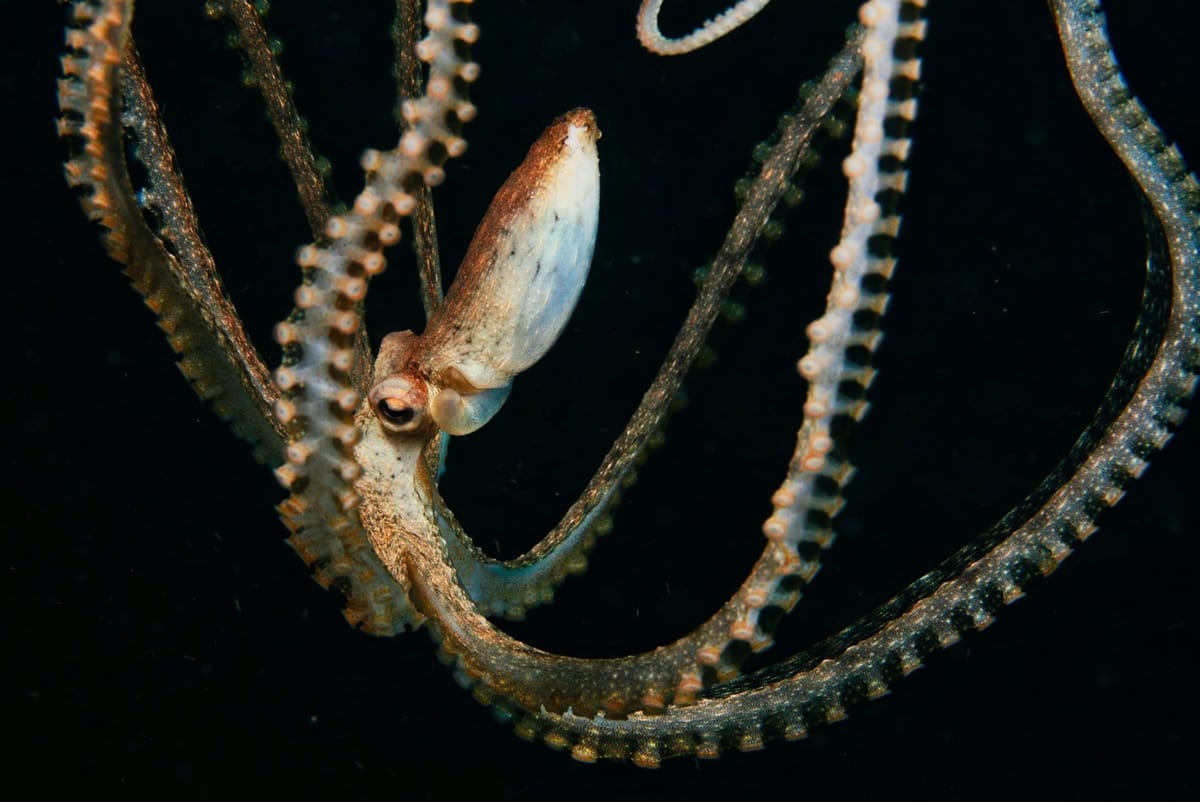Sucker for neuroscience. Eight arms, one brain: How do they manage?

The octopus is a master of movement and control. Each of its eight arms is a soft, flexible structure without bones, allowing movement in nearly limitless ways. Adding to this complexity, the arms are covered in hundreds of highly sensitive suckers, each capable of moving independently.
Despite this sophisticated system, octopuses exhibit remarkable motor control, graciously integrating movement along individual arms, across multiple arms, and within each sucker.
How the octopus brain and nerves manage this sophisticated coordination has remained largely unexplored. Until this study was published using modern scientific methods.
Here is what the study found
The one main feature that defines the octopus´ central nerve system is that it is decentralized.
In most animals, the majority of our nerve cells lodge in the brain. But, unlike most animals, an octopus does not rely solely on its central brain for movement control. Instead, the arms house a vast network of neurons, the amount exceeding those in the brain itself. You could say that it has sort of a decentralized brain in each arm ...
In the octopus arm, a major nerve cord runs and is accompanied by smaller nerve cords dedicated to each sucker. Unexpectedly, this nerve cord is segmented. The segment consists of nerve cell clusters that control the nearby musculature and suckers, forming a local network rather than a centralized command system. These segments are linked by nerves that ensure coordination between different sections of the arm.
This organization lets different parts of the arm handle specific movement and feeling tasks. Each part can and mostly works on its own. Its arrangement allows smooth, continuous motion while also permitting localized movements when needed.
The sucker, a both sensory (feel) and motor (suck) unit, is closely integrated into this nerve system. The nerves that control each sucker create a map in the octopus's brain that keeps track of how sensory and motor functions are arranged.
This setup helps the octopus handle objects efficiently, allowing it to pass things between suckers or tell the difference between textures and shapes. The way the nervous system is built shows a lot of specialization, possibly helping the octopus with complex behaviors like sensing chemicals and moving based on what it feels.
A model for soft robots?
Unlike rigid segmentation seen in many animals, this flexible octopus nerve system enables smooth, continuous movements while maintaining localized control.
Segmented organization within the octopus arm provides an efficient way to manage its repeated structures, resembling computational models used in robotics.
Unlike rigid machines, soft robots based on octopus-like principles could navigate complex environments, offering potential applications in medicine, underwater exploration, and beyond.
About the scientific paper:
First author: Cassady S. Olson, USA
Published in: Nature Communications, January 2025
Link to paper: https://www.nature.com/articles/s41467-024-55475-5




Comments ()